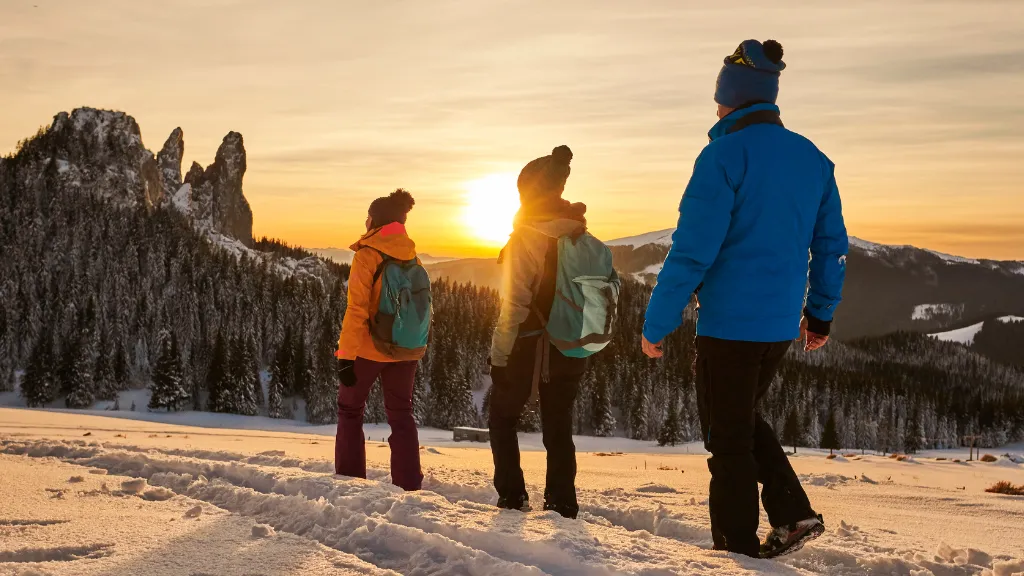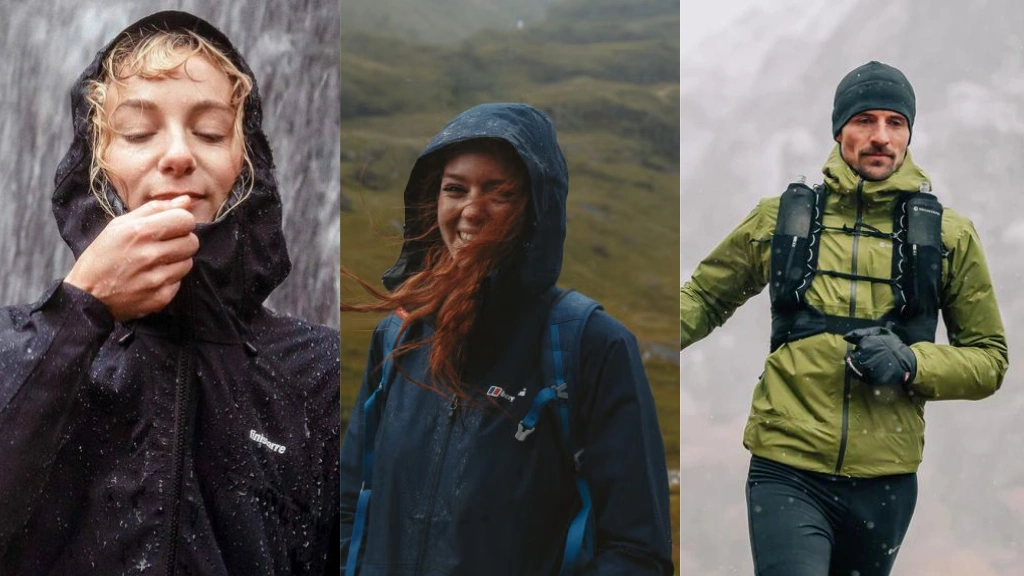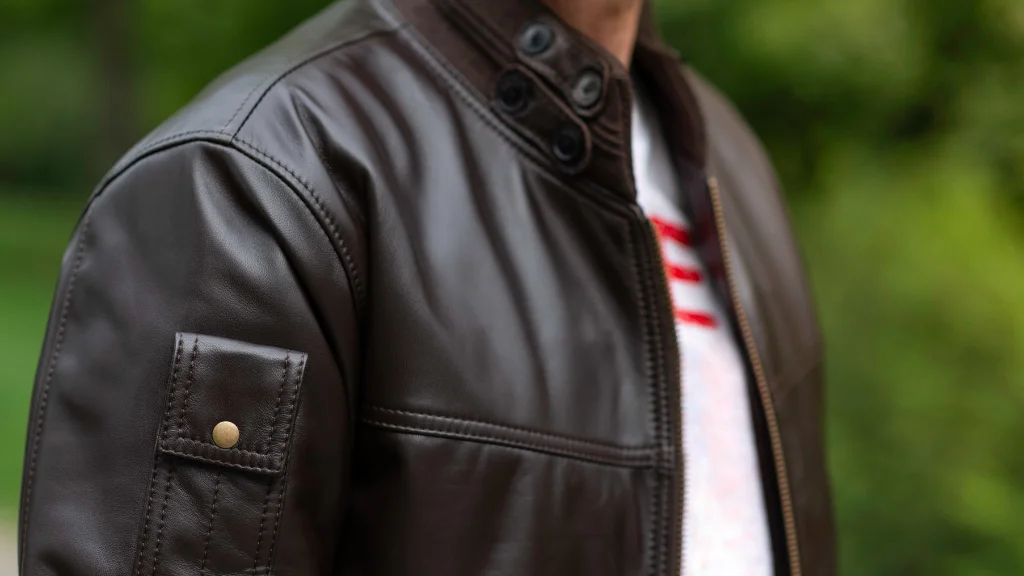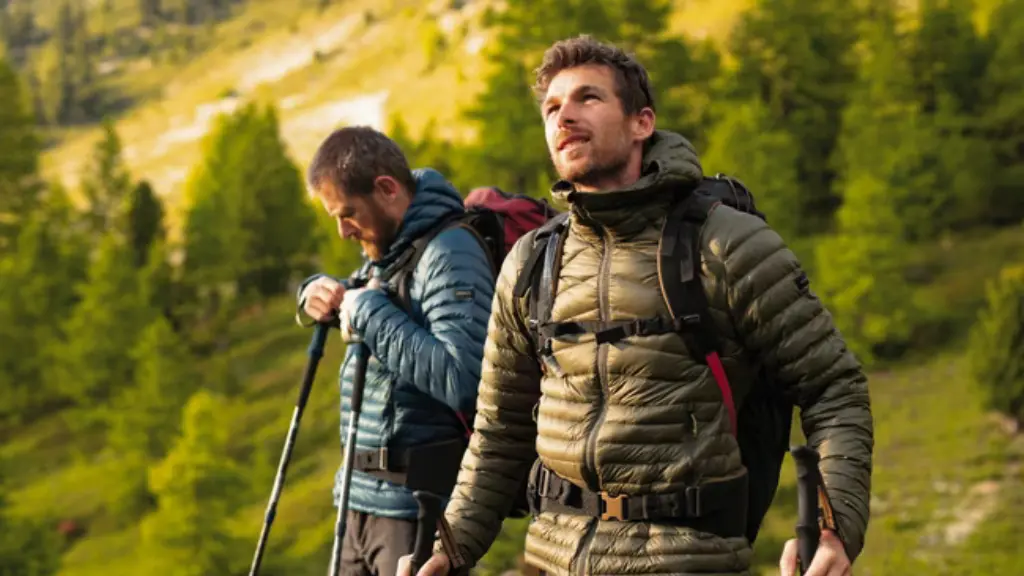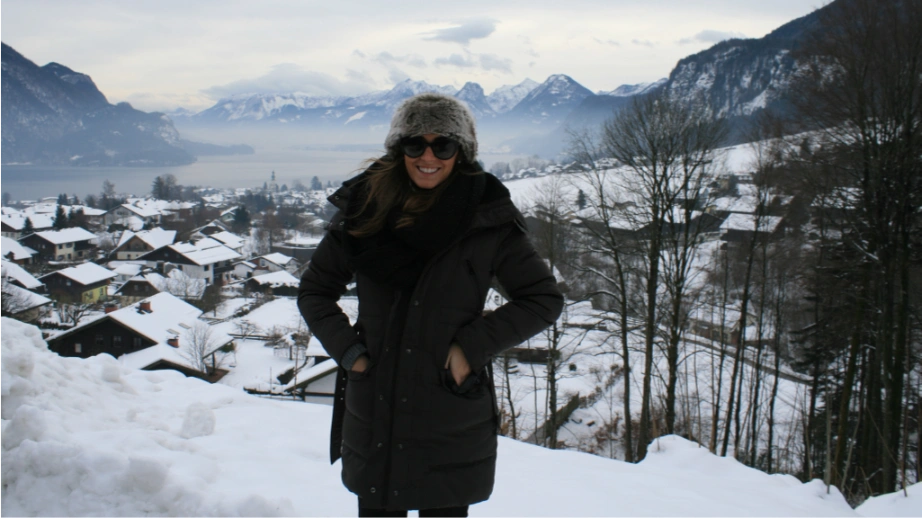What makes a good winter hiking jacket? Is it the material? The insulation? The fit? Yes, yes, and yes again.
But trying to figure out which hiking jacket will tick all the boxes is enough to make you want to hibernate until spring.
We’ve tested 15+ jackets over the years – fleece, down, synthetic, you name it. Some were terrific, others were straight up terrible.
To save you from wasting time and money on the wrong pick, we’ve put together a list of the best winter hiking jackets that don’t just keep you warm, but also perform well on the trails.
3 Best Fleece Hiking Jackets
1st Place: The North Face Denali Fleece Jacket | For Men | For Women
2nd Place: Cotopaxi Teca Full-Zip Fleece Jacket | For Men | For Women | Hoodie Version For Men | Hoodie Version For Women
3rd Place: Patagonia Retro Pile Fleece Jacket | For Men | For Women
3 Best Down Hiking Jackets
1st Place: Patagonia Down Sweater | For Men | For Women | Hoodie Version For Men | Hoodie Version For Women
2nd Place: Arc’teryx Cerium Hybrid Down Hoodie | For Men | For Women
3rd Place: Outdoor Research Helium Down Jacket | For Men | For Women | Hoodie Version For Men | Hoodie Version For Women
3 Best Synthetic Hiking Jackets
1st Place: Arc’teryx Atom Insulated Jacket | For Men | For Women | Hoodie Version For Men | Hoodie Version For Women
2nd Place: Fjallraven Expedition X-Latt Insulated Jacket | For Men | For Women | Hoodie Version For Men | Hoodie Version For Women
3rd Place: Outdoor Research SuperStrand LT Insulated Jacket | For Men | For Women | Hoodie Version For Men | Hoodie Version For Women
Fleece Hiking Jackets
The North Face Denali Fleece Jacket

KEY FEATURES
PROS
CONS
We LOVE this jacket. I’ve used it for light hiking during chilly 30°F days and in colder times, when the mercury drops to the 20’s, I’ve worn it as an outer layer and it worked perfectly.
One thing you’ll notice right off the bat, this jacket is quite the looker! I’ve had some people compliment me on it already. Made with recycled polyester shearling fleece, the Denali jacket strikes the perfect balance between comfort and environmental friendliness.
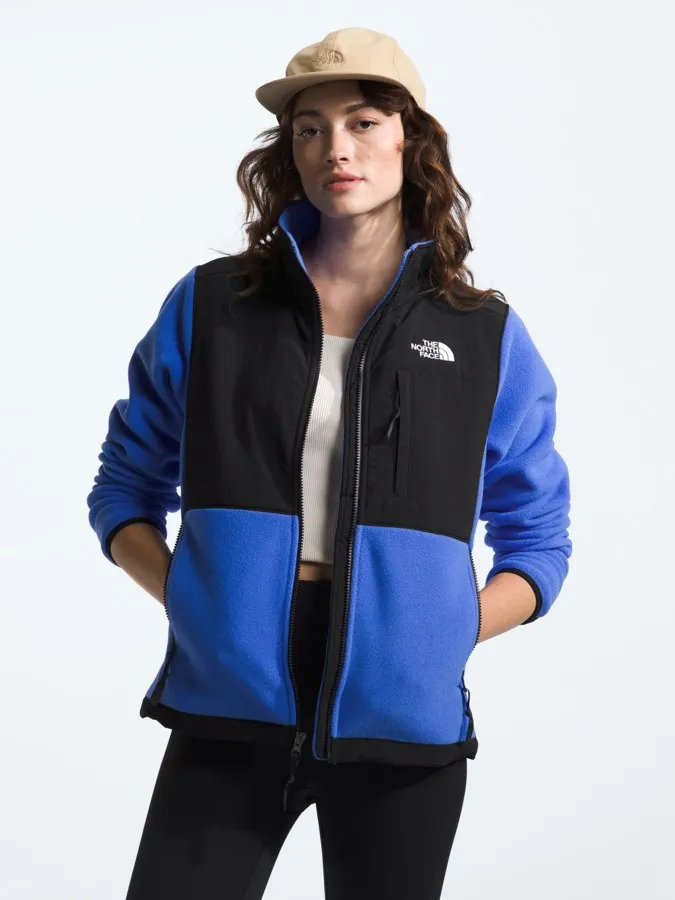
Its “medium” fleece weight may not sound all that extraordinary, but this means it’s neither too thin nor too bulky, making it an ideal choice for chilly winter hikes.
A zip-through, stand-up collar not only keeps your neck warm but also adds a touch of style. But, probably the most practical elements are the multiple pockets: one on the left chest and two up front.
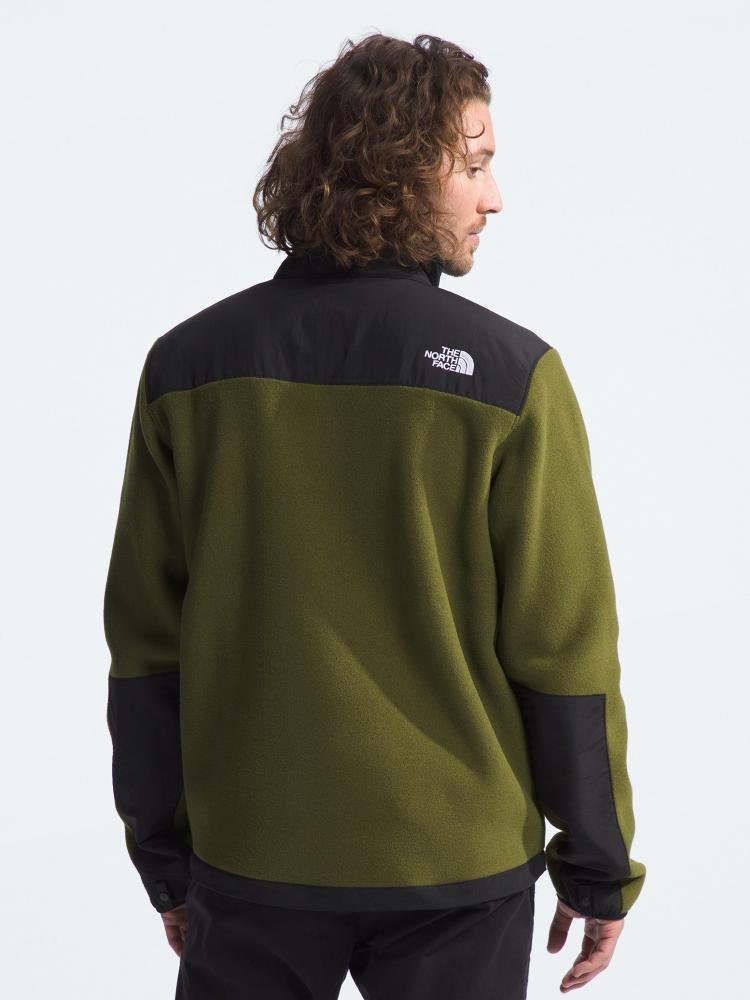
My big wish is for a hoodie version of this jacket, and I do miss the underarm venting that was present in the original version, which offered excellent breathability. I must live without these, but I’ll gladly take the trade-off for a jacket that keeps me warm and is comfortable to wear.
It seems the hiking community adores this piece of gear as well. Just hop on over to REI, where it earned 4.7 out of 5 stars from over 1000+ reviews.

Verdict
The North Face Denali jacket stands out as the best fleece jacket. It keeps you warm and comfortable on your hike and looks great with its recycled polyester shearling fleece material.
Its medium weight makes it versatile for various weather conditions, and the multiple pockets provide ample storage space.
Though a hoodie version and underarm venting would be nice additions, this jacket still tops our ranking.
Cotopaxi Teca Full-Zip Fleece Hoodie

KEY FEATURES
PROS
CONS
Made of 100% recycled polyester, this lightweight jacket is perfect for those who are eco-conscious and still want to stay warm. Plus, it’s a product by Cotopaxi, a brand I absolutely adore for their commitment to sustainability and top-notch quality.

With a Durable Water Repellent (DWR) finish, this jacket is not scared of a little water. Come rain or snow, you can trust it to keep your torso dry.
I’m a fan of the slightly roomy look and feel. If you’re like me, you’ll appreciate the hip-length back and the somewhat baggy cut. If you prefer a tighter fit, though, just size down.
This piece has internal pockets and two hand pockets ready to shelter your fingers but I wish they came with zippers. Still, they do the job just fine.
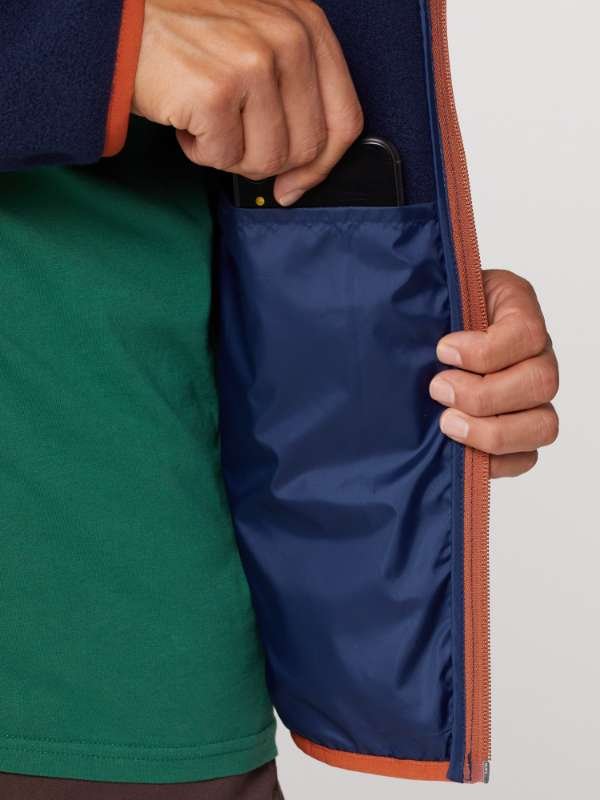
I tested this jacket hiking in temperatures in the 30s and 40s. It performed brilliantly, keeping me toasty while I was active. The fabric around the neck and sleeves is softer than a baby lamb, much superior to other brands.
I can’t end without talking about the looks. With a great color combination and a handsome fit, this jacket is sure to draw a few admiring glances on the trail.

Verdict
At just $110, it’s a bargain for such a high-quality piece. It’s one of the most affordable winter hiking jackets of its kind on the market. It’s durable, stylish, and environmentally-friendly.
Patagonia Retro Pile Fleece Jacket

KEY FEATURES
PROS
CONS
I chose this jacket as an oversized outer layer, and it worked beautifully. With room for multiple layers underneath, it did a great job on a cool (30 to 40 degree) day, especially when I was working up a sweat.
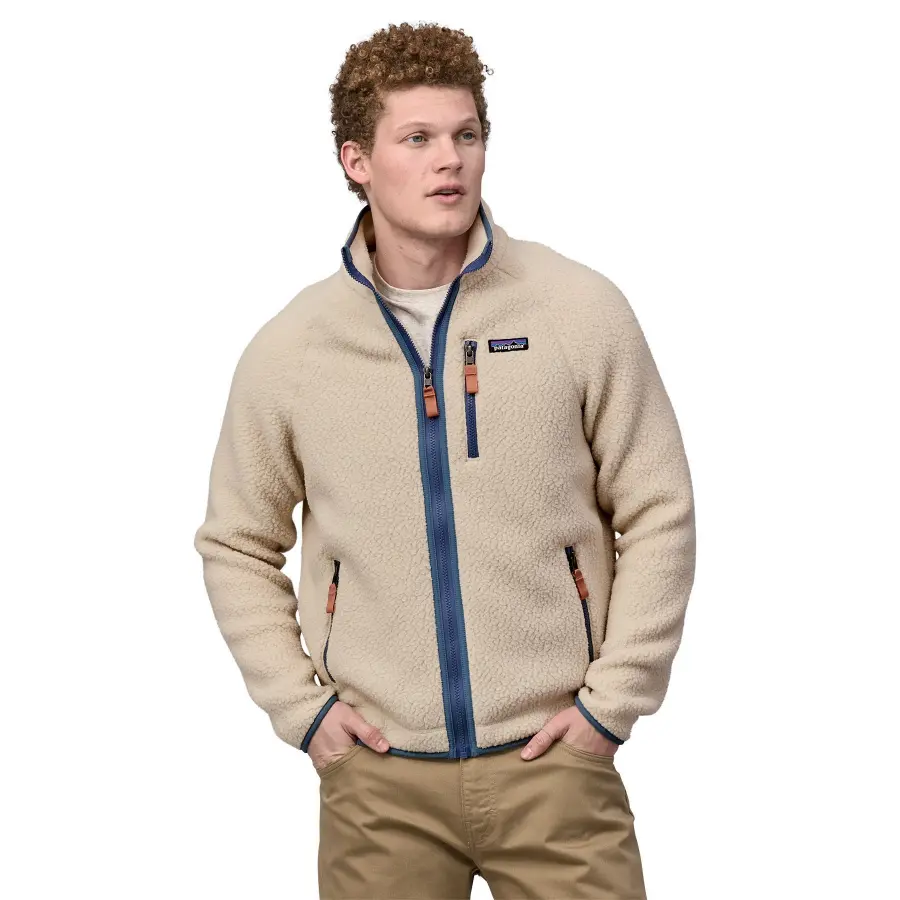
It might look heavy, but it’s actually very light. It also breathes really well so even in mild weather, you can wear it without sweating much.
However, the neck length is slightly longer than I expected so it could feel slightly bulky and restrictive while zipped all the way up.
Also, between the loose waist and the mesh pockets, there might be a bit of cold air sneaking in. This is something to consider if you plan on wearing just a t-shirt or lightweight layer underneath.
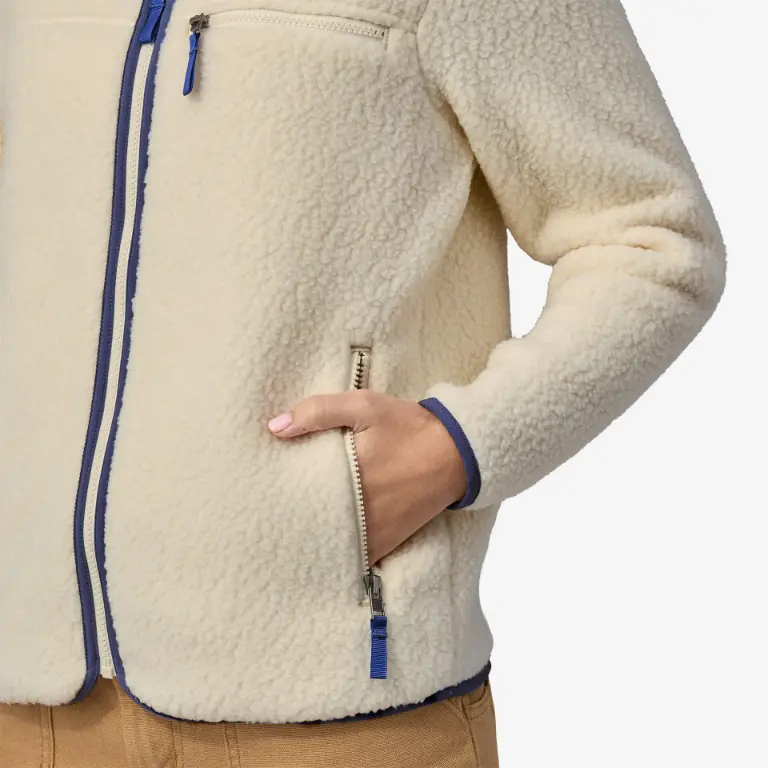
Verdict
For a price tag of $149, I see the Patagonia Retro Pile Fleece Jacket as a solid investment. It’s designed for winter activities, but it’s versatile enough to be worn casually too.
It has some room for improvement, but overall it’s a great choice for those looking to stay warm and comfortable while hiking during the winter months.
Down Hiking Jackets
Patagonia Down Sweater
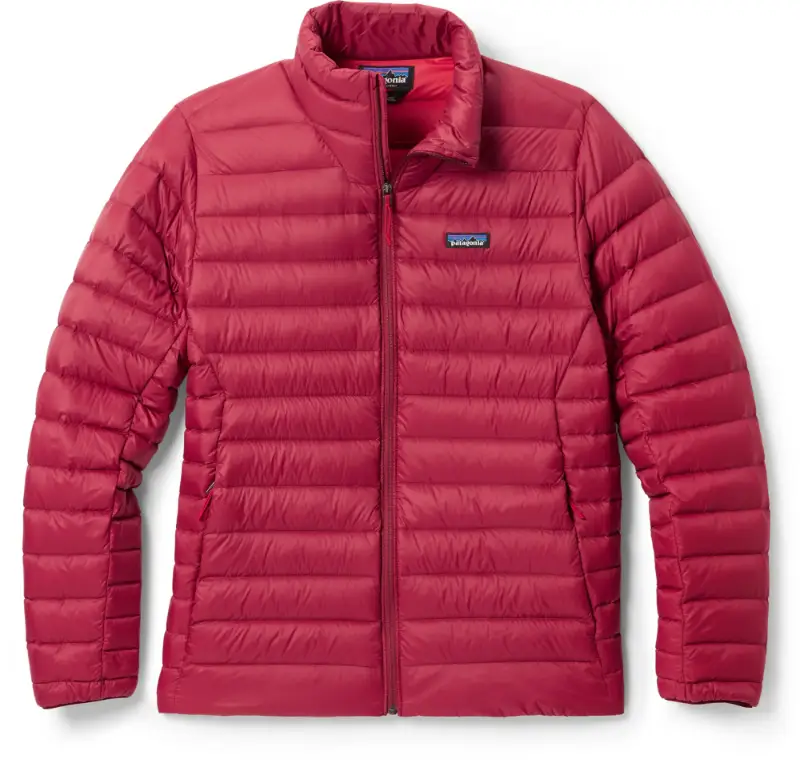
KEY FEATURES
PROS
CONS
With its 800-fill-power goose down, the Patagonia Down Sweater is incredibly warm. In fact, it’s so warm you might find it too cozy at times. But isn’t that a great problem to have in frigid temperatures?
Despite being an absolute beast against the cold, this jacket is a lightweight champion, coming in at just 13 ounces. We’re talking about the kind of lightweight that you’d barely notice you’re wearing.
And surprisingly, for all its warmth and lightweight nature, it’s pretty tough against stains.

One thing to keep in mind is that the exterior isn’t the most durable option if you’re going to be scrambling over boulders, but as a mid-layer, it’s perfect.
If you’re someone who loves a good hoodie on your jacket, there’s a hoodie version of the Patagonia Down Sweater too.

Verdict
The Patagonia Down Sweater is the kind of jacket that welcomes truly severe and windy weather with open arms. I’d even say it’s the best down hiking jacket out there. It’s not just about the warmth, or the lightweight, or comfort. It’s about all of it put together.
Arc’teryx Cerium Hybrid Down Hoodie

KEY FEATURES
PROS
CONS
The Arc’teryx Cerium Hybrid Down Hoodie goes beyond the usual to keep you warm and cozy on frosty hikes. Constructed from recycled dope dye nylon, it weighs only 9.2 ounces, making it one of the lightest options around.
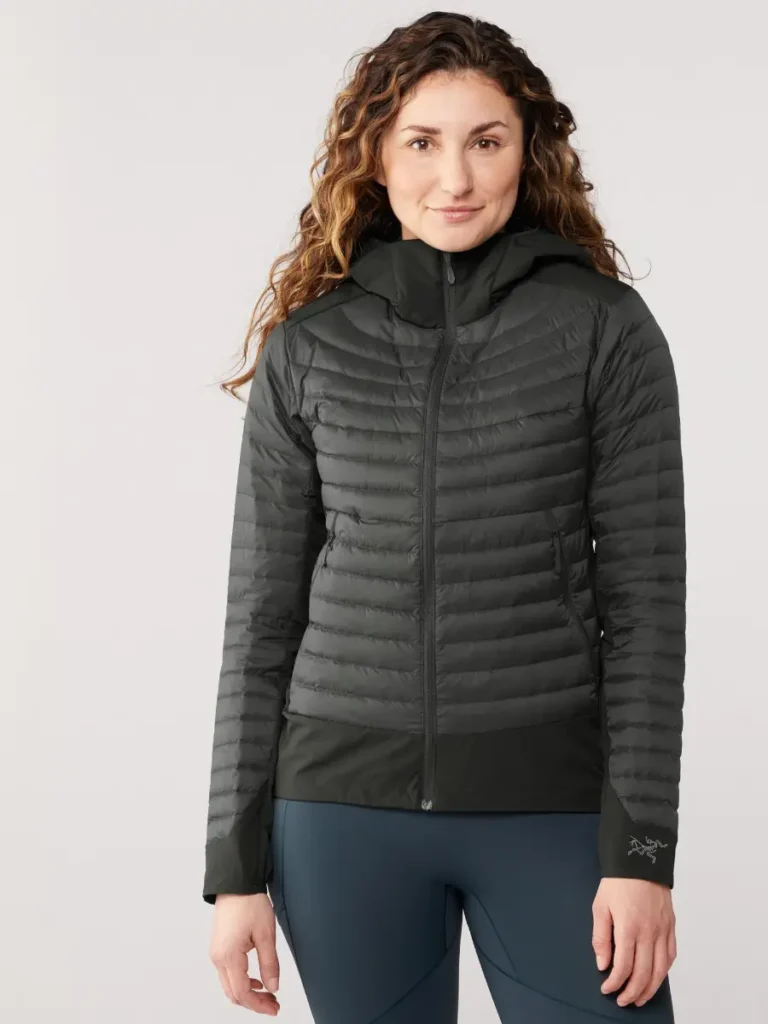
How this jacket packs so much warmth in such a light package? The secret is the 850 fill-power down for targeted insulation. This, combined with the Fortius Air 50 soft-shell fabric, delivers an exceptional warmth-to-weight ratio.
How good is this ratio? You can easily hike in 30 degrees cold without feeling like an overstuffed marshmallow, I promise you that.
There is also an insulated StormHood that adds an extra layer of warmth that you’ll appreciate in the biting cold.

The blueprints of this jacket include air-permeable Fortius Air 50 soft-shell fabric placed under the arms, down the sides and around the waist.
In simple words, you won’t have to worry about getting damp during a strenuous hike. And the best part is, there isn’t wind sneaking in the waist or arms stealing your warmth.
Another perk is the ease with which it can be stored in a small backpack. Unlike synthetic insulating layers, this slim profile jacket is neither heavy nor bulky.

Hikers often love to layer up with bigger, bulkier sweaters during winter. If you’re one of them, then consider getting a larger size than you would for this jacket as it has more of a form-fitting style.
Verdict
Whenever I come across the name “Arc’teryx,” I know my wallet is in trouble. But remarkably, their products are always worth the investment for me (maybe except their hiking belts – they need to work on those).
The Cerium Hybrid Down Hoodie is no exception to this rule. This jacket is incredibly lightweight and boasts an exceptional warmth-to-weight ratio. The use of recycled material in its construction makes it an environmentally friendly choice as well and I love it.
Outdoor Research Helium Down Jacket

KEY FEATURES
PROS
CONS
This jacket is extremely warm. Much warmer than it looks, and much more than you think! It fits just right and is comfortable down to even 10 degrees.
The pockets (5 in total) are absolutely amazing. They’re lined with a fuzzy soft material that I found perfect for keeping my hands warm during cold hikes.
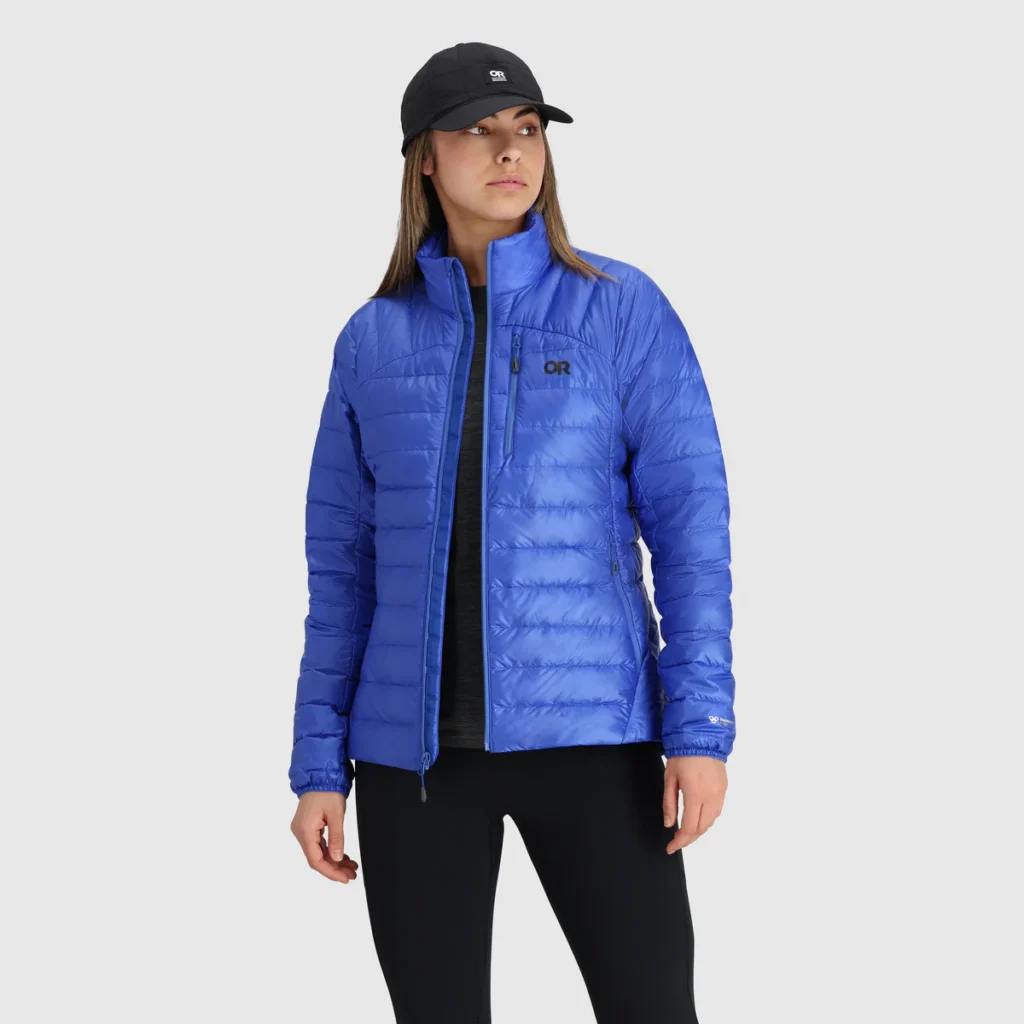
One feature you’d definitely appreciate is the adjustable drawcord hem. It allows you to tighten the bottom of your jacket when needed, making sure that there’s no cold air sneaking in.
It’s very easy to pack too! It can be easily compressed into a quart-sized bag to save space in your backpack.

You must be aware that the material tends to cling to sweaty skin. Make sure you wear a base layer to wick away moisture.
Also, if you’re particular about sleeve width, the bicep area of the sleeves is slightly wider than I expected. It doesn’t look bad, but it’s something you should know.
Verdict
The Outdoor Research Helium is a versatile addition to your winter gear. It’s lightweight, warm, and packs down small for convenient carry.
It has its quirks, but doesn’t everything? Overall, the upsides far outweigh the downsides, and it’s one of the best winter hiking jackets I’ve come across.
Synthetic Hiking Jackets
Arc’teryx Atom Insulated Hoodie

KEY FEATURES
PROS
CONS
This jacket is made from a robust combination of 94% polyester and 6% elastane. The result? A hoodie that’s not only tough but also provides that little bit of stretch you need for challenging winter hikes.

A key feature you’ll appreciate is its light weight, coming in at just 11.6 ounces.
Can something this light really keep you warm? Absolutely! Its 60g of insulation will keep you warm without adding any extra weight to your pack.
It also offers 2 hand pockets and a hidden chest pocket. Perfect for storing trail snacks or a handy flashlight.
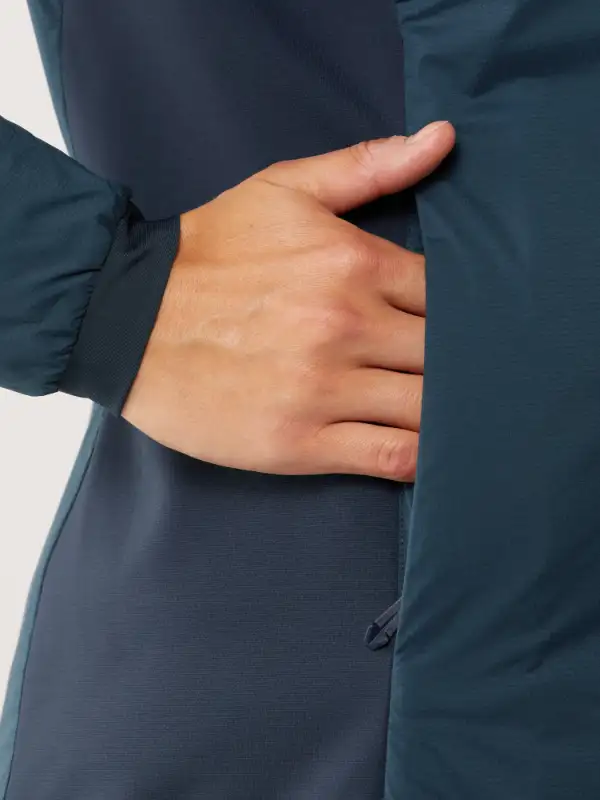
One of the jacket’s standout features are its articulated elbows and gusseted underarms. These design details really make a difference in your range of motion. Ever tried to scramble up a rocky incline in a jacket that’s too stiff? This design feature gives you the freedom to move easily and comfortably.
I also love the Coreloft insulation. This stuff is fantastic at temperature regulation as it’ll dispense that building heat so you don’t end up a sweaty mess.

I’ve worn this as a mid-layer under a shell on frigid days, but it’s also a great standalone piece. The venting on the sides under the arms also reduces moisture buildup, keeping you comfortable in a range of conditions.
This isn’t just a jacket for the trails. It’s stylish enough for city streets too! It’s also slim without being restrictive, so you can still layer up underneath.
Verdict
At $280, you might think it’s a bit steep and it definitely is. But again, with Arc’teryx, you get what you pay for. The quality of craftsmanship in this jacket is second to none and every seam is well made.
You won’t find a more versatile piece of clothing and you might even find yourself wearing it all year round.
Fjallraven Expedition X-Latt Insulated Jacket
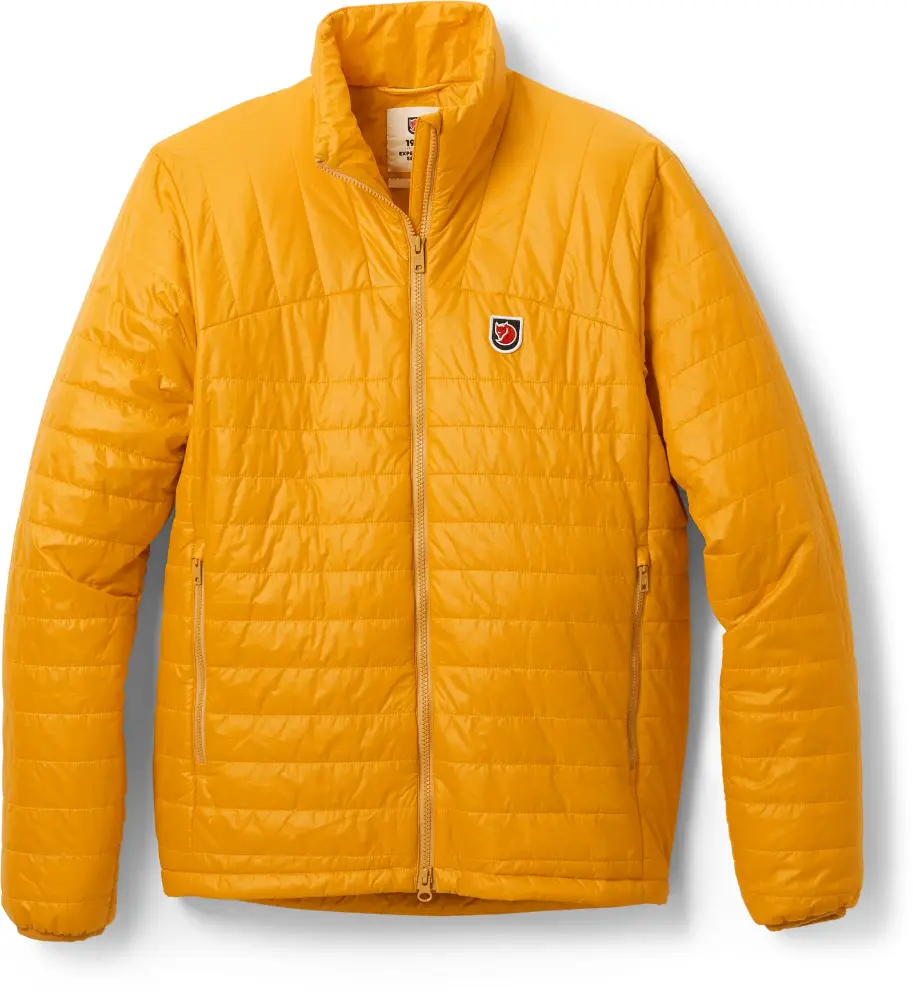
KEY FEATURES
PROS
CONS
The Expedition X-Latt is lightweight but it’s warm too. It can handle temps as low as 20 degrees.
It also packs down small. It’s super compressible and fits into your hiking pack like a dream.

The Expedition X-Latt is a comfortable jacket. The inside pocket is large, perfect for keeping your phone safe. The pocket is a bit low-positioned (you might take a bit getting used to it), but it’s perfect for keeping your hands warm.
This jacket has a snug fit, and it runs a little small. This might be an issue if you like to layer your clothes or have broad shoulders.
One quirk of this jacket is its double zipper. You might have to grapple with it a few times before it zips up properly.
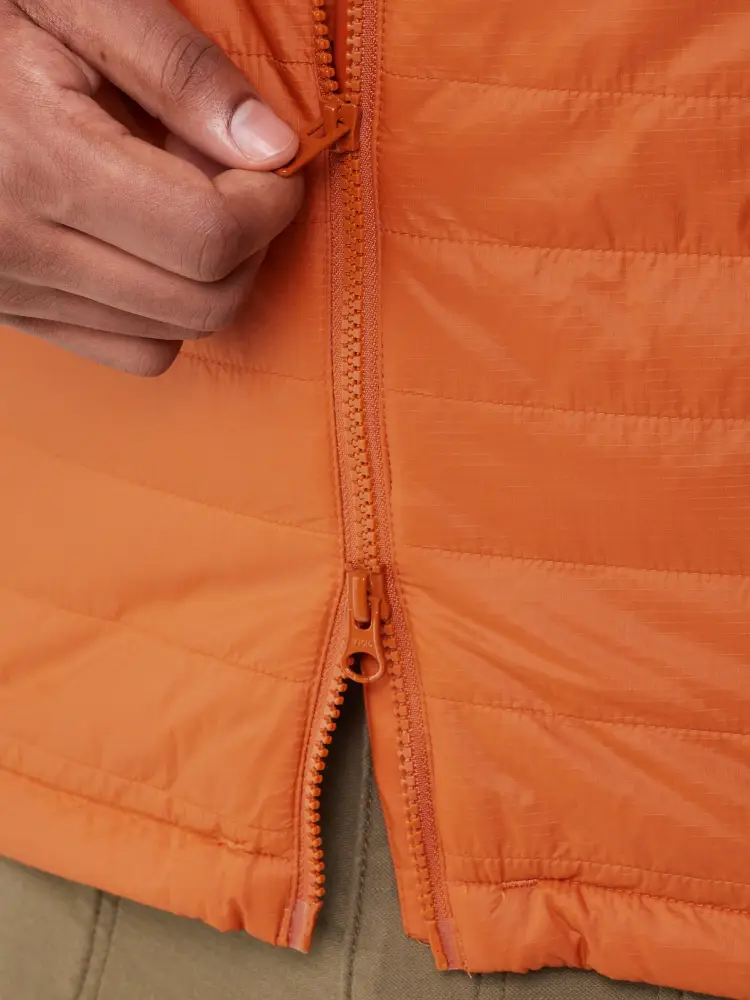
Verdict
I love Fjallraven products, and for a good reason. They consistently deliver on quality, durability, and functionality. Priced at $205, the Fjallraven Expedition X-Latt is on the expensive side but it will keep you warm, dry, and comfortable on your winter hikes for YEARS to come.
Outdoor Research SuperStrand LT Insulated Jacket

KEY FEATURES
PROS
CONS
With a weight of only 10 ounces, it’s light enough for those long, uphill climbs, and won’t bog you down. The fabric used is 100% ripstop nylon, meaning it’s not just robust but also designed to withstand harsh winter conditions.

I appreciate VerticalX SuperStrand insulation. This insulation offers the same light and lofty warmth as 700 or even 800-fill-power down. It retains its warmth when wet, a performance quality you’ll be hard-pressed to find in other down insulations.
It’s the little details that count for me, and the insulated collar adds that extra bit of warmth for your neck, keeping the chilly winds at bay.
The jacket comes with another nifty feature – a left-hand pocket that doubles as a stuff sack. Hiked up a sweat and want to shed a layer? No problem. Simply stuff your jacket into its own pocket and you have a compact bundle that easily fits in your backpack.

The Outdoor Research SuperStrand LT Jacket performs brilliantly in sub 20-degree weather. It can serve as a base layer or even a top layer. If you’re constantly moving, it holds up well in a temperature range from 40 to 20 degrees.
However, when temperatures go up, this jacket might make you a bit too toasty.
While the jacket offers an impressive performance in terms of insulation and durability, it does fall slightly short on breathability. It’s something worth considering if you often hike in warmer winter weather or high-exertion situations.
Verdict
The Outdoor Research SuperStrand LT is an excellent choice for winter hiking. It’s light, warm, and durable.
Just remember, for temperatures higher than 40 degrees, make sure you have another lighter layer to switch into, as this one can make you pretty warm.
How to Choose a Winter Hiking Jacket?

The Three W’s: Warmth, Waterproof, Windproof
When it comes to winter jackets, remember these three W’s: Warmth, Waterproof, and Windproof.
- Warmth: Your jacket should provide sufficient insulation. Down, fleece or synthetic materials work best. Down and fleece jackets, while light and comfy, may not perform well in wet conditions.
- Waterproof: Make sure your jacket can withstand snowfall and rain. Look for jackets with waterproof ratings over 5000mm. Is 5000mm enough? Well, it’s the standard for hiking jackets. Anything less might leave you soaked!
- Windproof: High winds can make cold temperatures feel even colder. A good windproof jacket will shield you from this wind chill effect.
Fit and Comfort: Don’t Skimp on This!
You want a fit that’s snug but not restrictive. Remember, you’ll be wearing layers underneath. The jacket should allow freedom of movement – who wants to feel like a stuffed sausage while hiking?
Try the jacket on with layers to see how it feels.
Bonus Features: The Cherries on Top
Extra features can enhance your hiking experience. Here are a few I personally love:
- Pockets: You can never have too many! They’re handy for storing maps, snacks, or even chilly hands.
- Vents: Pit zips or other ventilation options can help regulate your body temperature, especially during strenuous climbs.
- Adjustability: Look for drawstrings and Velcro straps. The ability to adjust your jacket’s fit on the fly is a lifesaver.
- Hood: A hood can provide extra warmth and protection from the elements. Make sure it’s adjustable, so it stays put during high winds.
Do Hiking Jackets Keep You Warm?
Hiking jackets are designed to trap heat and keep you warm in cold conditions. They come packed with insulation, either down, fleece or synthetic, which creates a barrier between your body and the chilly outdoors.
The higher the insulation rating, the warmer your jacket will be. But keep in mind that warmth also depends on how well the jacket fits you and how many layers you’re wearing underneath.
Types of Insulated Jackets
Now that we’ve covered what to look for in an insulated jacket, let’s explore the different types available:
Down Insulated Jackets
Down insulation is Mother Nature’s way of keeping birds warm, and it works wonders for us too. The higher the fill power (preferably 700 or above), the warmer you’ll be.
Down insulated jackets are one of the warmest options available due to their high-quality insulation material – goose or duck feathers. They have excellent warmth-to-weight ratio and can be compressed easily for packing.
However, they do have some drawbacks. If down gets wet, it loses its insulating properties and takes a long time to dry. This makes it unsuitable for wet conditions or activities where you might sweat a lot.
Synthetic Insulated Jackets
They are made with man-made materials such as polyester, which mimics the insulating properties of down. They’re also relatively lightweight and can provide warmth even when wet.
One of the biggest advantages is their price point. They’re usually more affordable than down jackets, making them a popular choice for budget-conscious hikers.
Hybrid Insulated Jackets
For those who can’t decide between down and synthetic, there’s the hybrid insulated jacket, like my beloved Arc’teryx Cerium Hybrid Down Hoodie.
These jackets combine both types of insulation to provide warmth, breathability, and water resistance.
The downside is that they tend to be heavier and less compressible than pure down or synthetic jackets.
Fleece Jackets
Fleece jackets are a popular choice for winter hikes due to their warmth and breathability. They’re made with fibers that trap heat close to the body, making them perfect for layering.
What I don’t like about them, however, is that they’re not very wind-resistant, so they work best when layered with a windproof outer shell. They also tend to be bulkier than down or synthetic jackets, making them less ideal for packing.
What Jacket to Wear for Winter Hiking?
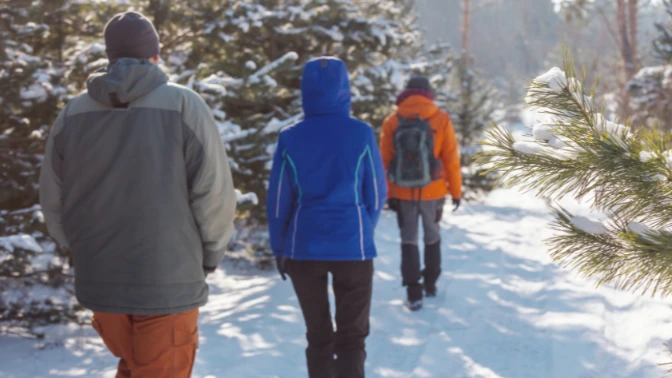
For winter hiking, you need an insulated jacket. When you’re hiking in winter, you’re battling the cold. And not just any cold, but even the bone-chilling, teeth-chattering, “why did I leave my cozy house” kind of cold.
You need a jacket that’s going to keep you warm and protect your body from the elements. Here’s what you should consider before buying one:
- The Temperature Rating: A jacket’s temperature rating is based on the lowest temperature it’ll keep you comfortable in. If you’re hiking in extremely cold conditions, go for a jacket with a lower temperature rating. For example, if you’re hiking in temperatures below freezing, look for a jacket with a temperature rating of -15°F or lower.
- Waterproofing: Winter means snow and rain – lots of it. Make sure your insulated jacket has a waterproof or water-resistant coating to keep you dry.
- Breathability: Hiking is an active sport, so you’re going to build up heat and sweat. Look for jackets with good breathability so that the moisture can escape and keep you comfortable.
- Weight: You don’t want your jacket weighing you down while hiking. Look for lightweight insulated jackets that still provide adequate warmth. The best weight ranges from 1 to 2 pounds but I personally prefer my jackets to be as light as possible so I aim for 10-13 ounces.
- Versatility: If you’re planning on going on multiple winter hikes, consider investing in a versatile jacket that can be used for different activities and temperatures.
Conclusion
Picking the right winter hiking jacket is much like finding the perfect hiking trail – it takes some time and research, but it’s totally worth it in the end.
With the best options listed in this article, you don’t have to spend hours searching for the perfect jacket. We’ve tested them, compared them, and even slept in them (for science purposes).
Whatever your budget, style, or needs may be, there’s a winter hiking jacket out there that will keep you warm, dry, and comfortable on your hike.

Lukas Heller
Hey there! I’m Lukas, co-founder of BigfootHiking.com, alongside my adventurous wife Martha. Originally from Germany, I landed in Phoenix, Arizona, in 2015, where I’ve been scouting out new trails ever since (though they’re getting scarce!). By day, I’m a software developer, but my heart belongs to hiking – I’m always plotting our next trip. When I’m not coding or on the trails, you’ll find me hanging out with our Pit Bull, Zeus.

